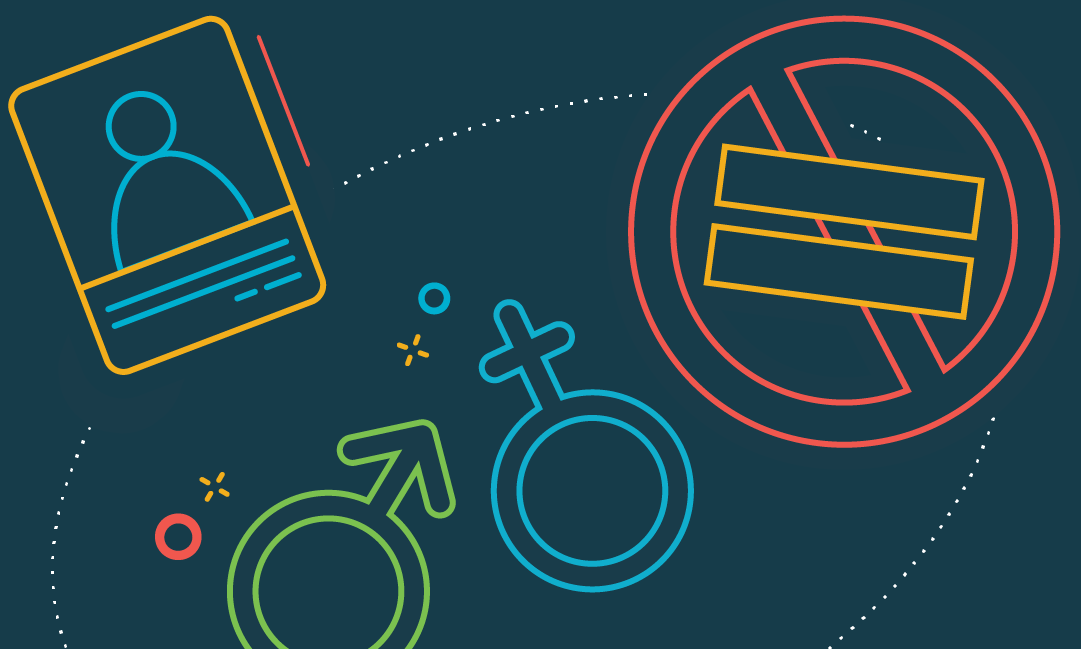Career service centers teach college students valuable interview tips, how to dress at the office, networking and soft skills to compete for jobs and succeed in their careers. But when it comes to tackling diversity in the workplace, it can be harder to prepare students for what’s ahead.
Many career center professionals have debated how to talk about gender inequality in the classroom. How can we adequately prepare female students to identify, address and eradicate inequalities they may face in the workplace? How can we motivate men to combat inequality and serve as allies to their female co-workers?
Here’s how to talk about the gender gap with college students:
What is gender inequality?
At the simplest level, gender inequality can be defined as the unequal treatment or perception of individuals based solely on gender. However, it is anything but simple.
Women don’t have to wait until they enter the corporate world to experience inequality. Numerous studies reveal that gender inequality’s roots are deep, start early in womens’ lives, and have lifelong effects. Biases can be found everywhere — at home, in classrooms, within government institutions and corporations and beyond.
Whether conscious or unconscious, intentional or unintentional, many of these biases come to a head in the workplace. For women, this can mean barriers to learning opportunities, promotions, leadership positions, pay equity and more.
While this news can be disconcerting, corporate America is making progress. According to McKinsey’s Women in the Workplace report, we’re seeing more women in senior-level positions, and companywide commitments to gender diversity are on the rise. CEOs are publicly owning up to compensation gaps and adopting multi-year plans to close them. Organizations’ career pages highlight female mentoring, resource groups, networking events, family friendly policies and programs, and more.
But while these recruitment marketing materials promote hope and optimism, gender equality is still a long way off. According to the World Economic Forum’s 2020 Global Gender Gap Report, it will be 99.5 years before gender parity is achieved. Even the U.S., which is viewed as a global leader in many respects, placed #53 out of 153 countries in the 2020 global gender gap index rankings. So, there’s still a lot of work to do.
Current Landscape for Women Leaders
Women are underrepresented in leadership roles across industries and functions.
<5%
of Fortune 500 CEOs are women
20%+
the gender pay gap experienced by women — it’s even greater for women of color
2.2%
of total venture capital funding by women business founders
22.2%
of S&P 500 board members are women
Source: Forte Foundation
Will students recognize inequality at work?
Thanks to the media and movements like #metoo, most people have some level of awareness about the gender pay gap and sexual harassment issues that women may experience on the job. However, many behaviors and mindsets that contribute to gender inequities at work aren’t so obvious, and don’t necessarily break the law.
For example, a recent report shows that 64% of women still face gender-based microaggressions at work — a trend that disproportionately affects non-white women. For example, women may experience:
Gender-based microaggressions in the workplace
- Not having access to the same information at the same time as male counterparts
- Being addressed with terms of endearment
- Being assigned a more administrative tasks than men
- Not getting or taking credit for their own work
- Being interrupted
- Being negatively labelled for the same behaviors displayed by men
- Being held to higher expectations than men
- Fear of being negatively perceived for getting married or having a family
Many men agree that there’s an issue.
“Woman or man, if you’re an MBA working today, chances are better than even that you’ve seen gender inequality in action at a former workplace — or experienced it yourself. In newly published research, 59% of MBAs — nearly six in 10 — say they have ‘personally experienced’ or ‘heard of’ gender inequality at one or more past organizations.”
Poets & Quants
Prepare students to identify, address and overcome gender bias
Colleges and universities are doing groundbreaking research on gender equity, its causes and potential solutions. They’re in the unique position to foster student confidence and competence in identifying and addressing systemic and behavioral issues that contribute to inequality in the classroom, workplace and beyond.
Students whose curriculum may not specifically include gender studies research or coursework may benefit from additional training through Career Services departments before they start their job search. Here are a few ideas to build your curriculum:
- Acquaint them with resources (like the Bloomberg Gender Equity Index, 100 Best Companies for Working Moms and Glassdoor) to research companies before accepting a job.
- Help them learn how to identify and report hiring biases.
- Train them to identify and address gender inequities on the job.
- Offer a salary negotiation workshop.
- Connect students with LeanIn, the Forte Foundation, the American Association of University Women (AAUW) and other organizations committed to advancing women in the workplace.
On the flip side, employers can turn to our other resources to learn more about women’s expectations for workplace diversity and our technology solutions to build diverse candidate pipelines.


